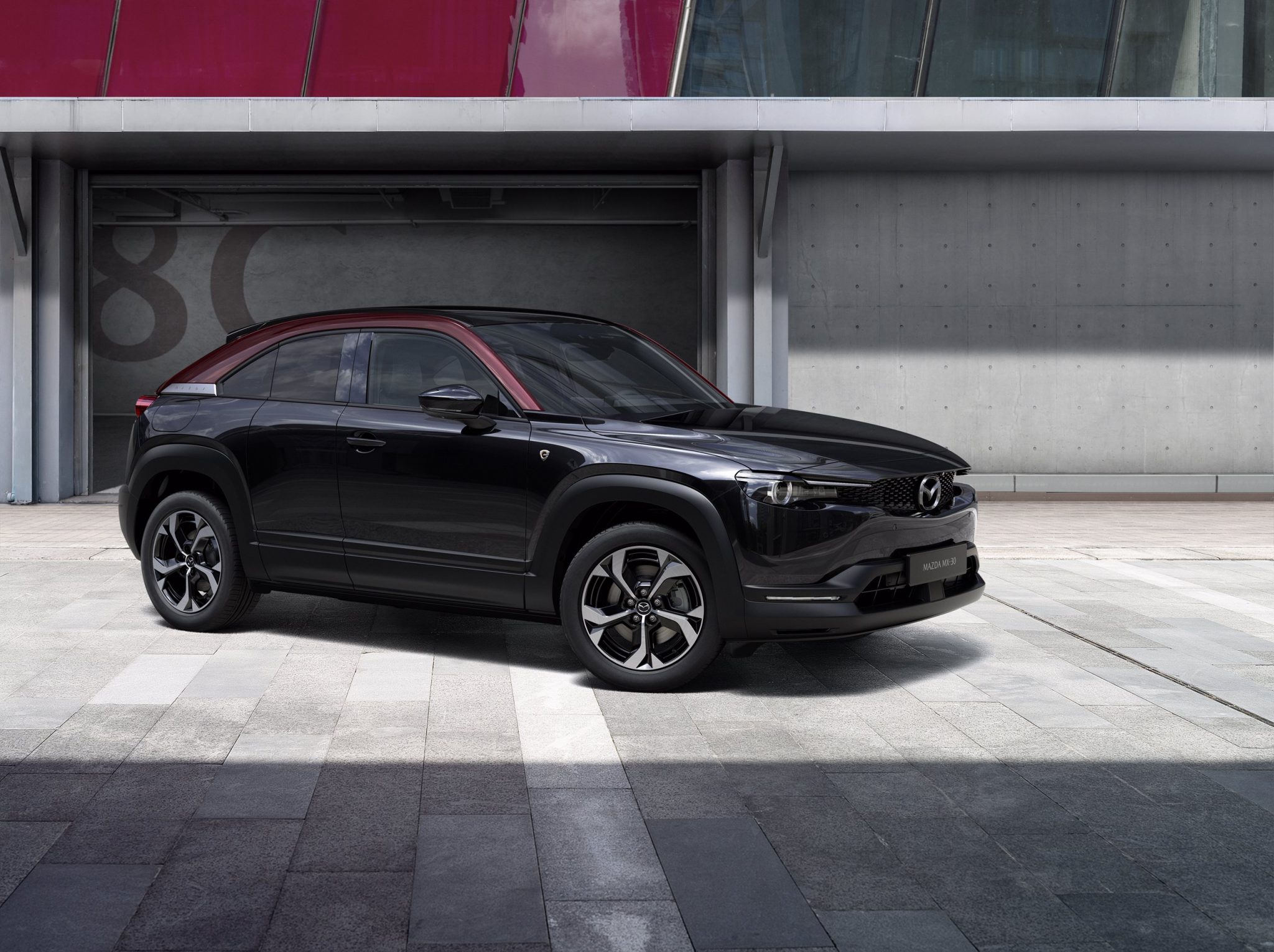Mazda MX-30 R-EV: Innovative Hybrid System

Mazda is once again pushing boundaries with the MX-30 e-Skyactiv R-EV, a model that reintroduces the rotary engine, here serving as a generator in a unique hybrid system. This vehicle is powered exclusively by an electric motor, with the rotary engine functioning to maintain the battery charge. After a week-long test drive, here’s my detailed feedback on this model, which brought some surprises but also raised a few reservations.
Dimensions and Exterior Design: A Compact SUV That Stands Out
The Mazda MX-30 R-EV stands out with its bold, compact design. Its dynamic silhouette strikes the perfect balance between modernity and ruggedness, maintaining Mazda’s distinct flair. Its compact size is an advantage for urban driving, and the unique styling, especially the rear-hinged doors, doesn’t go unnoticed. This unusual door configuration adds a touch of uniqueness while making rear-seat access easier.

Interior Design and Ergonomics: Elegant and Understated
Opening the doors reveals a meticulously finished cabin in the MX-30. Mazda has opted for eco-friendly materials, using cork and recycled fabrics, giving the interior a refined, responsible feel. The seats are comfortable, well-suited for city driving and medium-distance trips, while the controls are intuitive. However, the limited trunk space is a reminder that this SUV is more suited for short trips than for heavy hauling.


Powertrain: A Unique Series Hybrid with a Rotary Engine
Mazda’s innovation shines through with this series hybrid setup: the MX-30 R-EV is propelled solely by its 170-hp electric motor, while the 74-hp rotary engine functions as a generator for the 17.8 kWh battery. With an electric range of 85 km according to the WLTP cycle, this system offers useful flexibility for daily commutes. However, the rotary engine, while quiet in urban areas, becomes more noticeable on highways, slightly reducing acoustic comfort on longer trips.

Driving Experience: Smooth in the City, but Noticeable Vibration on the Highway
After a week of testing, the MX-30 R-EV primarily stands out for its enjoyable city driving experience. In electric mode, drives are smooth, silent, and the transition between electric and rotary engines is seamless. In urban settings, the model excels with its maneuverability and quiet operation. On the highway, however, the rotary engine is more noticeable, producing sounds and vibrations that can be unpleasant. The maximum speed of 140 km/h, capped to reduce consumption, may feel limiting for drivers seeking a bit more thrill.

Comparison with Competitors: The Rotary Engine Stirs Mixed Opinions
Compared to models like the Renault Captur E-Tech and Toyota Yaris Cross Hybrid, the MX-30 stands out for its originality and the boldness of its rotary engine. However, long-distance performance in terms of fuel consumption and range may fall short when compared to competitors with more traditional hybrid engines. Mazda’s system has the advantage of electric-only operation in the city, but on highways, fuel consumption noticeably increases.
Pricing in Belgium: Reasonable for the Features Offered
In Belgium, the Mazda MX-30 e-Skyactiv R-EV starts at 38,250 euros, with our test model, the Edition R, priced at 45,450 euros. The pricing remains attractive, especially given that the model is well-equipped even in the base version. Mazda has clearly focused on a well-appointed and generously equipped model to appeal to buyers looking for a different, thoughtfully designed compact SUV.
Conclusion: The Mazda MX-30 R-EV, a Bold but Double-Edged Choice
With the MX-30 R-EV, Mazda offers an inventive alternative for drivers who prioritize electric-only driving for daily use, with the option for longer trips without range anxiety. The technology is innovative, and the city driving experience is very pleasant. However, for those looking for extended highway range and impeccable acoustic comfort on long trips, the MX-30 R-EV does have some limitations.
Pros:
- Extended range in hybrid mode and increased versatility
- Enjoyable city driving and quiet in full-electric mode
- Competitive pricing for a well-equipped hybrid SUV
Cons:
- High fuel consumption of the rotary engine on long journeys
- Sound and vibration of the rotary engine on the highway
- Limited performance for sportier driving
